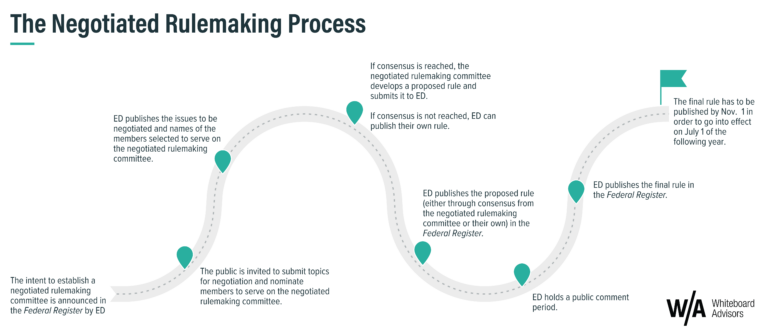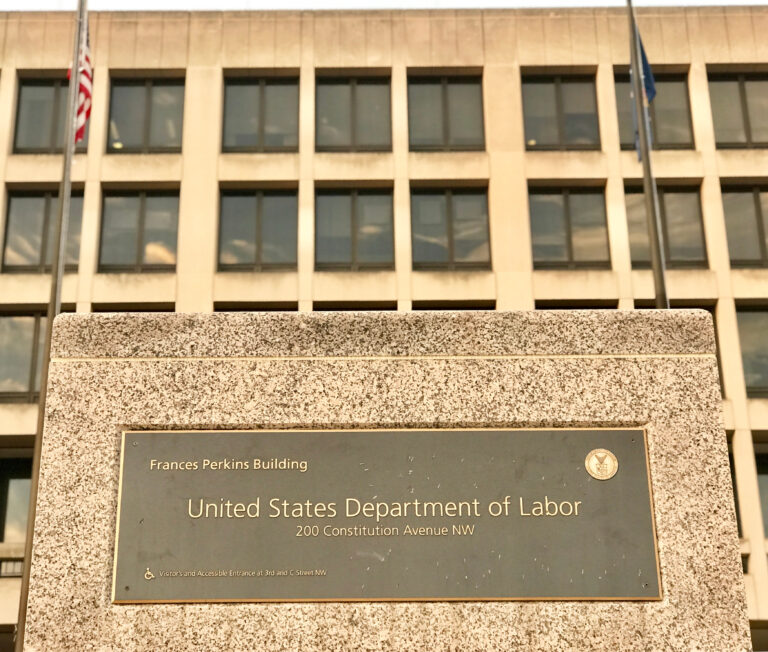Ashley Gaddis, a senior associate at Whiteboard Advisors, helps to lead our work with JFF’s Center for Justice and Economic Advancement and other clients working in the criminal justice space. This week, she sat down with Annelies Goger, a fellow at Brookings Metro to discuss strategies to support formerly incarcerated people as they reintegrate into their communities post-release. The interview is based on Annelies’ recent TEDx San Quentin talk “Three ways to set people up for success after prison” which explores the challenges that formerly incarcerated face upon release as well as promising solutions to drive better outcomes for these individuals and their families.
Ashley Gaddis: How did you first begin exploring issues in criminal justice related to reentry and second-chance hiring? How has this interest unfolded in your professional life?
Annelies Goger: Well, as you hear in my talk, I’ve had several friends, who’ve had violent incidents happen in their lives. In both cases, the men who committed these acts got house arrest rather than being sentenced to time in jail. It made me really angry because of the pain they caused and made me wonder what would have happened if they weren’t from privileged backgrounds.
When I got to Brookings, I immediately connected with Rashawn Ray who is a brilliant scholar on policing, and learned about his VR lab at the University of Maryland. Through ongoing conversation, we’ve really connected about this idea of using VR to scale access to reentry services and education. As we continue exploring this work, I want to be engaging with the user center design aspect, interviewing people to find out what are the barriers that they’re concerned about both before release and after release and then what kind of content or curricula would help address some of those needs.
Ashley: Tell me more about the VR work. What are the main benefits that you envision from this type of approach?
Annelies: To access VR programming, you don’t need an internet connection, which is mostly prohibited in correctional facilities—so that alone makes this work really compelling. As for the types of programming we’re interested in developing, we’ve discussed starting with VR simulations of mock interviews, mentoring sessions, and information about how to search for a job. These things vary a lot by industry and so do the norms of individual workplaces. If you’re in healthcare, it’s one way, if you’re in construction, it’s another. I think there’s very little appreciation of that in general in the workforce system that cultures of work vary and for people that are just getting started in these industries, particularly for those who don’t have access to this kind of information, aren’t going to have the same readiness as their peers. VR is one way that we can begin transferring this knowledge in a manner that feels engaging and similar to what they’ll experience once released.
People often ask how VR enhances proximity. First of all, it frees up time for counselors working in correctional facilities that have to repeat curricula and instead work one on one with individuals. So from a time and effort standpoint, that’s huge. Secondly, for programming developed to support on the employer side, it could really help their staff to help them develop empathy and understand the challenges that incarcerated people have dealt with as they work to make their organizations a more inclusive environment. It’s not the same experience as having a direct human connection, but it does allow users to put themselves in someone’s shoes so, for training purposes, this is an essential first step.
Ashley: For many formerly incarcerated people, getting hired is just the first hurdle of many that they encounter when they join the workforce. What can employers do to create environments where returning citizens can succeed?
Annelies: I think there’s a broader conversation about diversity equity inclusion in hiring that we have barely begun to scratch the surface of. When thinking of the unique challenges that previously incarcerated people encounter in the workplace, having supports in place is essential. In some cases, you might need to have like a social worker available to offer support. if somebody has transportation problems or housing problems because they have a record and they are getting rejected from getting an apartment, that can impede their ability to get to work.
For example, people that are on parole have to have check-ins with parole officers which can sometimes disrupt their work schedules. It’s tricky to navigate these conversations with colleagues and can lead to reactions that are not so hospitable. It adds to the further trauma sensation that people experience during reentry. This is where peer groups and staff trainings can be helpful. This is why we were thinking about using VR in that context to help build empathy and understanding so that these conversations are easier to have.
Ashley: How do you think we can begin to rectify some of these unhealthy dynamics in the workplace and facilitate the development of environments where talent can be more fully cultivated?
Annelies: When you have diverse leadership, there’s really good evidence that your revenue goes up. And yet we treat diversity like it’s optional or an act of charity instead of an opportunity to drive ROI. I would really love to see investment in that talent and in apprenticeship and onboarding generally.
You can look at companies like Pepsi or Microsoft that are known for second chance hiring initiatives and recognize that they hire from these populations, but for what kind of jobs? Internal career ladders are really critical and that’s where apprenticeship and reentry come together really well. If you build that apprenticeship infrastructure, then you have that internal career ladder for learning. Not only does that help those folks, but it also helps everybody, especially in a tech-enabled economy.
The more that you have an atmosphere of learning and sharing, you get the more ideas. The more fresh ideas that you bring into your company and its culture, the more you see innovation. That’s what makes a country strong. That has nothing to do with charity.
Ashley: That’s an interesting point. Could you speak to the implications of more substantive reentry efforts on a national level and how that can help propel our economy forward?
Annelies: We are really falling behind. Every other major company country is training people and investing in their own talent and we’re importing the to put them in our tech industry instead of training our own people. What I think we need is some infrastructure so that small and mid-size companies can pool their funds for those types of training institutes to provide those early-stage on-ramps.
Ashley: What do you think is next in conversations about reentry from a policy perspective?
Annelies: it’s a bipartisan issue. I think with the First Step Act you have like the initial, you know, threads yeah. Of what we need, but the implementation is just nowhere near where it needs to be. If you’re focusing more on rehabilitation and reentry and not just punishment, that means you have to untangle all these rules and all these norms. Whether it’s the transitional housing people end up in and the rules that they have and whether they actually support the goal of employment. There’s no formal link between job centers to jails and prisons. There have been some pilots to put job centers in prisons, but not even all of them went in because of all the rules of getting in the door. That’s where Congress could step in and create laws that require prisons to let job centers in. It’s hard at first because the culture of each facility is different and often depends on the will of the administration and the staff. It’s all new to them and many are used to this punishment-first mindset.
Why would you spend so much money putting someone in a cage when you could be spending a little bit more up front to make sure they’re housed and have a job? What we have is a system that doesn’t help people get better and in many cases makes them worse. And so therefore they become more violent and they become more incapable of being independent and contributing to society. We’re undermining our whole core point.
What country can succeed if that many of its people cannot get a job because they have a record? There is a lot of talent that we’re overlooking because they’re trapped in a box and it’s creating dependency. Formerly incarcerated people want to be working and they want to contribute to their families. They want to make up for what they did and we’re not even giving them a chance to really lay the foundation for successful reentry at this point. This has to change.



